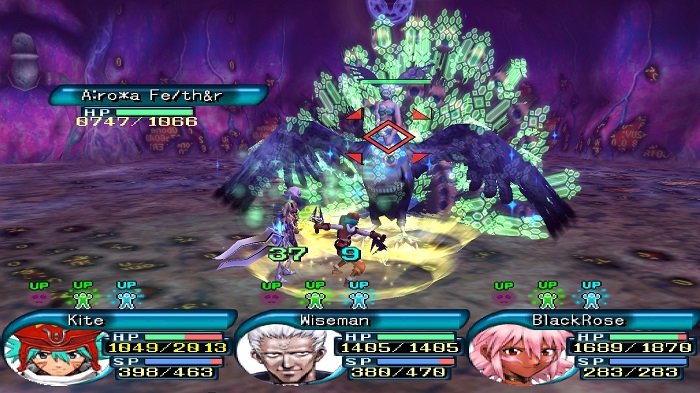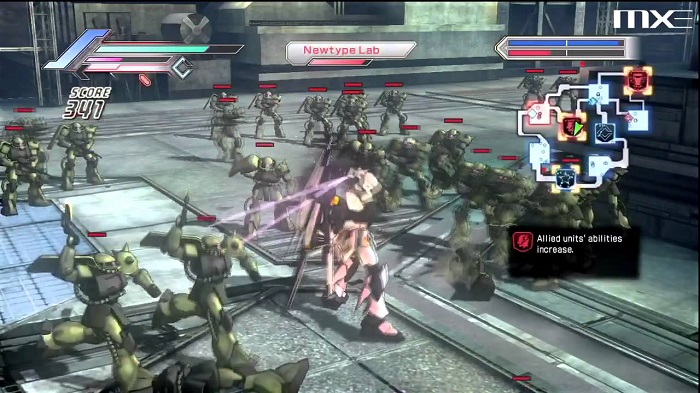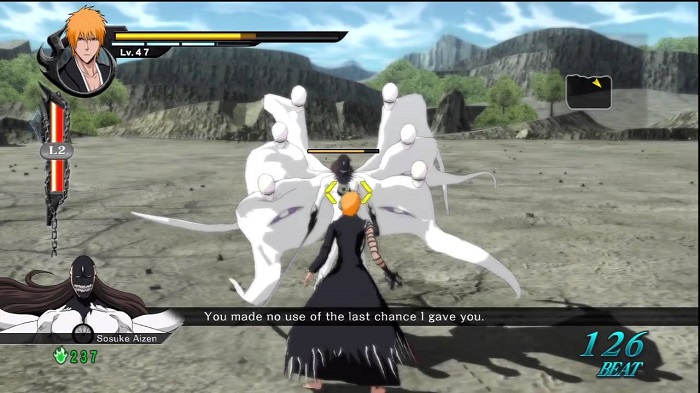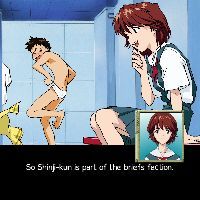Anime and video games, video games and anime; the two forms of media have gone hand-in-hand for decades with both inspiring creations of the other. Not all adaptations are created equal though. This list will take a quick look at ten of the best games to be based off of anime and are just waiting for you to get your hands on them.
There are two qualifiers for a title to be on this list:
-
The game has to have had an official North American, translated release. There's a wide world of fan translated games that were never officially released outside of Japan, but that's another list for another day. All of these games are available for legal purchase through the used games market or a digital marketplace.
-
The game can't precede the anime or be based off an anime that was already based on a game. For example, Fate/unlimited codes is a wonderful fighting game but is ineligible for the list since the Fate/stay night series started as a visual novel/video game series. For the same reason, something like Medabots won't be featured either. There may however be a unique exception somewhere on this list...
Little Nemo: The Dream Master

It’s not often a game’s history can date back to the early 1900’s, but that’s the case of Little Nemo: The Dream Master. The character of Nemo was created back in 1905 in an American comic strip called Little Nemo In Slumberland. In 1989, Tokyo Movie Shinsha produced an animated film entitled Little Nemo based on the comic strip which was then turned into a game by Capcom. Little Nemo: The Dream Master is largely considered a classic title for the NES, even though it’s also rather difficult.
It follows in the tradition of the run and jump platform game, though Nemo does have the ability to feed candy to certain animals and subsequently ride them to pass obstacles and attack enemies. Thanks to its enduring legacy among retro gamers, in some ways, it's more famous than the comic and movie that inspired it.
.hack

It might be pushing the boundaries of the list’s theme to call this a game based on an anime considering that the .hack franchise was designed around the idea of it being a multimedia project. However, the first product in the project was an anime, so in this instance, the game qualifies.
The .hack series of games were released for the PlayStation 2 and include .hack//Infection, .hack//Mutation, .hack//Outbreak and .hack//Quarantine. These action RPG’s allow you to play as the character Kite, as you explore the MMO game “The World” in an attempt to find out how and why the game is causing certain individuals to slip into comas in real life. The game’s mechanics do a pretty respectable job of recreating an online multiplayer experience in a single player, offline setting.
The storyline is rich and interesting, and you’re allowed to carry over data from game to game, giving the player a sense of accomplishment and progression. The events of the games are also crucial to understanding the .hack series as a whole, given that the story is canon and helped shape the follow up anime and manga series .hack//Tasogare No Udewa Densetsu otherwise known as .hack//Legend of the Twilight.
Dragon Ball Z: Budokai 3

For a while, it seemed like the American Dragon Ball Z fans were never going to get a decent game. 1997’s Dragon Ball GT: Final Bout was a mess of a title, made before the series gained its spike in popularity in North America. Dragon Ball Z: Budokai was the first release post spike, and hit the PlayStation 2 in 2002. It was certainly an improvement over Final Bout, but it was still a bit lackluster.
Budokai 2 was almost universally considered a step backwards for the franchise, but Dragon Ball Z: Budokai 3 not only reversed that course, but blew away expectations of fans. The story mode was improved, the fighting mechanics were greatly expanded and enhanced, the character roster was significantly increased, and a cinematic approach to the battles was implemented to greater convey the theatrics of the anime. It’s thanks to this game that the DBZ franchise has continued to produce fighting games, culminating in the most recent ones, Dragon Ball Xenoverse and Xenoverse 2.
Dragon Ball Z: Attack of the Saiyans

The Dragon Ball Z franchise has been no stranger to RPGs. Savvy gamers in search of DBZ games on the internet in the late ‘90s and early 2000’s were likely to stumble upon a translated ROM of Dragon Ball Z: Super Saiyan Densetsu (Legend of the Super Saiyan). This uniquely card based RPG never received an American release, but for some, it scratched the itch of having a DBZ turn based RPG. Finally in 2009, developer Monolith Soft delivered a legitimate RPG experience in the form of Dragon Ball Z: Attack of the Saiyans for the Nintendo DS.
With colorful graphics, strong turn based battles, the ability to customize the leveling up stats of the game’s characters, and inclusion of specially written side-stories to expand the game’s plot; it offered a fresh take on the familiar Saiyan Saga story arc. Despite not breaking any new ground in the RPG genre, it is a well-designed and engaging experience that’s especially pleasing to fans of the series.
Dynasty Warriors: Gundam 3

For as many Mobile Suit Gundam series as there has been, there have been just as many Gundam video games. There’s been everything from straight up Street Fighter clones, to Japanese arcade simulators that have two teams of five players duking it out in a virtual battlefield. While American audiences haven’t had that luxury, we at least get to share in the fun of mowing down hundreds of mobile suits at a time in the Dynasty Warriors: Gundam series.
The third title in this series is the strongest of the bunch, featuring the greatest amount of mobile suit options from the largest number of Gundam franchises. Pick a Gundam, pick an arena, mow down the enemy in hack, slash, and shoot combat. It’s mindless fun but fun nonetheless, especially in two-player co-operative mode. Sometimes it’s the simple joys in life, like the relentless slaughtering of mobile suits, which makes days worth waking up for.
Bleach: Soul Resurreccion

While most games based off of Bleach are 1 vs. 1 fighting games, Bleach: Soul Resurreccion (sic) draws more inspiration from the Dynasty Warriors series. Players get to pick from up to 21 fighters (many of them unlockable) primarily from the Arrancar story arc. You then get to hack and slash your way through dozens to hundreds of hollows using some generic attacks as well as your chosen character’s specialty moves. Each stage grades you on completion time, number of hollows killed, amount of damage taken, and combo points to award you a grade and points that can be used to level up your character.
Despite the repetitive nature of the hack and slash gameplay, it remains the best option for Bleach fans to get their bankai on without going through the same fighting game mechanics that virtually every other Bleach game focuses on.
Astro Boy: Omega Factor

In 2004, one of the oldest anime in existence received a brand new game for the Game Boy Advance. What made the title so special though is not so much the heritage of its brand, but the heritage of its developer. Astro Boy: Omega Factor was developed by Treasure, the same company behind Gunstar Heroes, Dynamite Headdy, Guardian Heroes, Radiant Silvergun, Ikaruga, and other extremely well received, action packed titles.
Astro Boy: Omega Factor lived up to the reception of these previous games by featuring beautiful animation, a well-rounded difficulty curve, constant action, and a story very faithful to the Astro Boy legacy with characters pulled from the decades of the anime and manga’s lore. It’s one of the highest rated game’s for the Game Boy Advance and by proxy, one of the most highly lauded anime based games to every be released.
Pokemon Puzzle League

This Nintendo 64 game is unique in several ways; one is that it’s a Pokemon game that was not released in Japan and the other in that it’s very specifically based on the Pokemon anime. Essentially, Pokemon Puzzle League is a re-skin of the puzzle game, Panel de Pon. It’s one of the progenitors of the “match three” puzzle type game, focusing on real time horizontal switching of panels in order to match them, clear them, and form combinations.
The game was originally introduced to American audiences in 1996 as Tetris Attack with a Yoshi’s Island theme. Pokemon Puzzle League substitutes in a Pokemon theme featuring characters, voice actors, and music from the anime. Furthering the connection to the anime, most of the songs on the soundtrack are instrumental, MIDI versions of songs from the 2 B A Master Pokemon Soundtrack. The wildly fun and addictive nature of the game isn’t linked to Pokemon, but having the theme, soundbytes, and music from the anime is a fun addition to the mix. It’s also available on the Wii Virtual Console, so it’s fairly easy to get a copy to play.
Sword of the Berserk: Guts’ Rage

Of all the anime series to get a mainstream video game adaptation, perhaps one of the least likely would’ve been the excessively violent, sexual, Berserk. Sure enough it got one though, and it was exclusive to the Sega Dreamcast. Sword of the Berserk: Guts' Rage, is a fully fleshed out action title with a compelling narrative, great music (composed by Susumu Hirasawa, the same man responsible for the anime’s music) and branching paths for players to take in order to complete the story.
The gameplay isn’t exactly varied, but it does a fantastic job of letting the player experience and feel the power of Guts and the weapons he has at his disposal. Say what you will about Cloud Strife from Final Fantasy VII and his Buster Sword, Guts and his Dragon Slayer came first, and this game lets you see the impact of that blade spilling blood and cleaving enemies in twain.
U.N. Squadron

You might be thinking to yourself, “I don’t know of an anime called U.N. Squadron? What kind of chicanery is this?” Well, that’s because the original name of the game before it was retitled for international release was Area 88 - which suddenly makes a great deal more sense. U.N. Squadron is a side-scrolling shooter that was initially released on arcade cabinets before being ported to the Super Famicom and Super Nintendo.
Unlike other, similar shoot ‘em ups, U.N. Squadron gives the player a good deal of choice when starting out; being able to choose from one of three fighter planes with an amount of money that can be used to purchase different upgrades for the selected fighter. It’s still a very difficult game, as many side-scrolling shooters tend to be, but it’s impeccably well designed and balanced so that fans of this gaming genre are virtually guaranteed to have a blast playing it.
Honorable Mention:
Tatsunoko Vs. Capcom: Ultimate All-Stars

While not specifically based on any particular anime, Tatsunoko vs. Capcom: Ultimate All-Stars still needs to be mentioned since it’s the only place American audiences can go to play as some absolutely classic anime characters from series like Scientific Ninja Team Gatchaman, Shinzou Ningen Casshern, Time Bokan Series: Yatterman, and Time Bokan Series: Gyakuten Ippatsuman, amongst others. The game plays like most other Capcom vs. games, just this time around you can pit Capcom’s roster of characters from Street Fighter, Mega Man, Darkstalkers etc. against Tatsunoko produced anime characters (instead of ones from Marvel Comics or SNK titles).
Given all the legal rights and loopholes Capcom had to jump through to get this game localized, it’s amazing it even made it out of Japan. So don’t let the opportunity go to waste; pick up a copy of this one if you have a Wii or Wii U to play it on.




